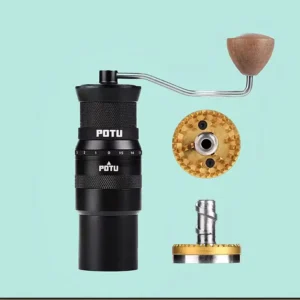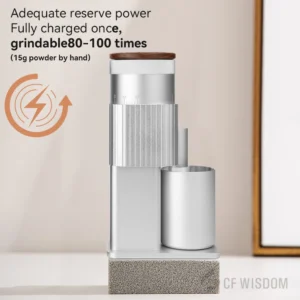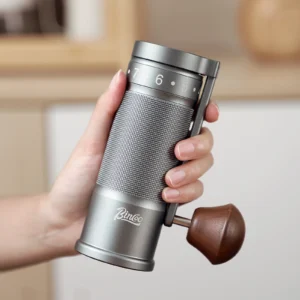The Science of Espresso Extraction: Understanding the Fundamentals
Espresso extraction is the magical process where pressurized water passes through compacted coffee grounds, dissolving hundreds of chemical compounds that create the complex flavors we love. When hot water meets coffee under pressure (typically 9 bars), it begins dissolving compounds in a specific order – first acids, then sugars, and finally bitter compounds. This sequential extraction explains why getting the timing right matters so much.
The chemical makeup of espresso includes aromatic oils that give espresso its enticing smell, various acids that provide brightness and complexity, soluble sugars that contribute sweetness, and caffeine which adds a pleasant bitterness. These compounds combine to create that perfect balance we’re seeking in a great shot.
Coffee professionals often talk about extraction percentage – a measurement of how much of the coffee’s soluble material ends up in your cup. The sweet spot for balanced flavor typically falls between 18-22% extraction. Below this range (under-extraction), shots taste sour and thin; above it (over-extraction), they become bitter and hollow.
The single most powerful factor controlling this extraction percentage? Your grind texture. It directly determines:
- How quickly water flows through the coffee puck
- How much surface area is exposed to water
- How evenly extraction occurs throughout the puck
Understanding the extraction percentages with visual references provides a clearer picture of how this process impacts flavor in your cup. Research published in food science journals consistently shows that minor changes in grind size can dramatically shift extraction and resulting flavors.
Grind Size as the Primary Extraction Variable
Among all the variables affecting your espresso (dose weight, brew temperature, pressure, etc.), grind size reigns supreme. It’s your most powerful tool for controlling the flow rate and extraction level of your espresso shot. When you adjust grind size, you’re fundamentally changing how water interacts with coffee particles.
This happens because of basic physics – finer grounds create more surface area for a given weight of coffee. More surface area means water can extract compounds more efficiently. Think of it like breaking a sugar cube versus powdered sugar – the powder dissolves almost instantly because of its vastly increased surface area.
Grind size also creates resistance in the coffee puck. Finer grinds pack together more tightly, causing water to flow more slowly and spend more time in contact with the coffee. This extended contact time increases extraction. Conversely, coarser grounds allow water to pass through quickly, reducing contact time and extraction.
This relationship creates a direct cause-and-effect chain:
– Finer grind → Slower flow → Longer contact time → More extraction
– Coarser grind → Faster flow → Shorter contact time → Less extraction
Adjusting your grind size effectively lets you control which compounds are extracted and in what quantities. The difference between a 30-second shot and a 20-second shot isn’t just 10 seconds – it’s a completely different balance of flavor compounds in your cup.
Having the right equipment makes precision possible. Quality manual burr grinders allow you to make the minute adjustments needed to dial in perfect extraction. A simple comparison test reveals how dramatic the impact is – the same coffee ground at different sizes can taste like completely different beans.
The Ideal Espresso Grind: Visual and Tactile Identification
The perfect espresso grind has a distinctive look and feel that, once familiar, becomes your guide to consistent shots. Visually, ideal espresso grounds resemble fine table salt or granulated sugar, but with a more uniform consistency. The particles should be significantly finer than those used for drip coffee but not as powder-like as flour.
When assessing grind texture by touch – a technique called the “pinch test” – rub a small amount between your thumb and forefinger. Proper espresso grind feels somewhere between powder and fine sand. It should feel slightly gritty but primarily soft and flour-like. The grounds should clump slightly when pressed together but still break apart fairly easily. This clumping indicates the presence of oils and the right particle size for espresso extraction.
Common comparisons help describe espresso grind texture:
– More like fine sugar than table salt
– Finer than kosher salt but coarser than powdered sugar
– Similar to the texture of fine beach sand
These comparisons offer helpful starting points, but developing a tactile memory for proper espresso grind comes with experience. When examining grounds visually, look for consistency above all else – the particles should appear uniform in size without obvious large chunks or excess powder.
Understanding the ideal texture for perfect shots takes practice but becomes intuitive over time. The right equipment makes achieving this texture possible – manual espresso grinders designed specifically for espresso provide the fine adjustment capability needed for this precision work.
Unlike the coarse, chunky texture of French press grounds or the medium-fine texture of pour-over grounds, proper espresso grind has a distinctive velvety quality that helps create that perfect resistance to pressurized water.
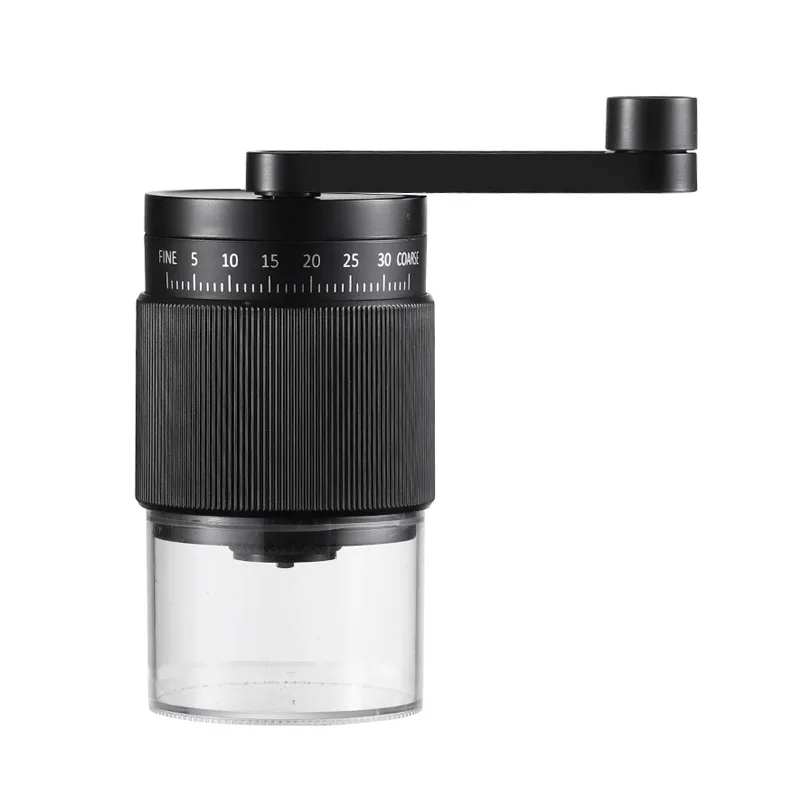
Grind Consistency: The Overlooked Critical Factor
While much attention goes to grind size, grind consistency deserves equal focus. Consistency refers to how uniform your coffee particles are – ideally, every particle would be identical in size. This uniformity matters tremendously because differently sized particles extract at different rates.
When your grounds contain a mix of particle sizes, smaller particles over-extract (becoming bitter) while larger particles under-extract (remaining sour). This creates conflicting flavors in the same shot – bitterness and sourness simultaneously, rather than a harmonious flavor profile.
Inconsistent grind also causes channeling – when pressurized water finds paths of least resistance through the coffee puck. Instead of flowing evenly through all grounds, water rushes through gaps created by inconsistent particle sizes. This results in:
- Some grounds being over-extracted
- Other grounds being barely extracted at all
- Uneven extraction throughout the puck
- Inconsistent shots from one pull to the next
The quality of your grinder directly impacts particle distribution. Lower-quality grinders produce a wider range of particle sizes, while high-quality burr grinders create more uniform particles. Achieving consistent particle distribution is essential for balanced extraction.
Quality manual coffee burr grinders produce significantly more consistent particles than blade grinders or cheaper burr models. When examining grounds from different grinders under magnification, the difference becomes obvious – quality grinders produce remarkably uniform particles while lesser grinders create a mix of boulders and dust.
Even with perfect grind size, inconsistent particles will undermine your results. This is why grinder quality matters just as much as grinder adjustment capability for serious espresso preparation.
Reading Your Extraction: Visual Indicators of Grind Quality
Learning to “read” the visual cues of your espresso extraction provides immediate feedback about your grind quality. A properly extracted shot follows a distinctive visual progression that indicates proper grind texture.
In an ideal extraction with proper grind:
1. Initial phase (0-8 seconds): Nothing emerges for the first few seconds during pre-infusion
2. Early flow (8-15 seconds): First drops appear dark, almost syrupy in consistency
3. Mid-extraction (15-25 seconds): Flow develops into what baristas call the “mouse tail” – a steady, thin stream resembling a mouse’s tail in thickness and consistency
4. Late extraction (25-30 seconds): Flow maintains its honey-like viscosity before gradually lightening
The “mouse tail” phenomenon is particularly telling – this thin, steady stream should have a reddish-brown color and flow consistently without spurting or breaking. It indicates proper flow resistance created by appropriate grind texture.
Crema, that golden-brown foam on top of espresso, also tells a story about your grind. A proper extraction produces abundant, persistent crema with a tiger-striped or mottled appearance. The crema should be medium to dark in color, not pale blonde, and should hold together when you stir it.
Too-fast extraction (from coarse grind) produces thin, pale crema that dissipates quickly. Too-slow extraction (from fine grind) often creates dark, thin crema or uneven coverage with bare spots.
“Blonding” – when the espresso stream shifts from dark brown to pale blonde – signals the end of optimal extraction. With correct grind settings, blonding should begin around 25-30 seconds into your shot, not earlier or significantly later.
These visual indicators help you adjust your grind before even tasting the shot. When you see improper flow patterns or premature blonding, you know adjustments are needed before the espresso reaches your cup.
The Taste Spectrum: Identifying Extraction Levels Through Flavor
The ultimate test of your grind quality is the flavor in the cup. Each extraction level creates a distinctive taste profile that directly reflects your grind texture choice.
Under-extraction (typically from too coarse a grind) produces:
– Dominant sourness or sharp acidity that overwhelms other flavors
– Thin, watery mouthfeel lacking richness
– Flavors that disappear quickly rather than lingering
– Weak aroma and minimal sweetness
– Possible grassy or hay-like notes
– Often a faster flow rate (shot completes in under 20 seconds)
Optimal extraction (from proper grind texture) delivers:
– Balanced sweetness, acidity, and pleasant bitterness
– Rich, syrupy mouthfeel with substantial body
– Complex flavor notes specific to the coffee’s origin
– Lingering aftertaste with pleasant flavor development
– Proper flow rate (shot completes in 25-30 seconds)
– Harmonious integration of flavors rather than any single overwhelming note
Over-extraction (typically from too fine a grind) results in:
– Dominant bitterness that coats the palate
– Astringent quality that creates a drying sensation
– Hollow, one-dimensional flavor lacking nuance
– Ashy or burnt notes regardless of roast level
– Unpleasant lingering aftertaste
– Often a slower flow rate (shot takes over 35 seconds)
Learning to identify these flavor profiles helps pinpoint grind adjustments. When sourness dominates, you likely need a finer grind; when bitterness overwhelms, a coarser grind is typically the answer.
The relationship between extraction time and flavor becomes more apparent with experience. Over time, you’ll develop a mental flavor map connecting taste experiences to specific grind adjustments, making the dialing-in process increasingly intuitive.
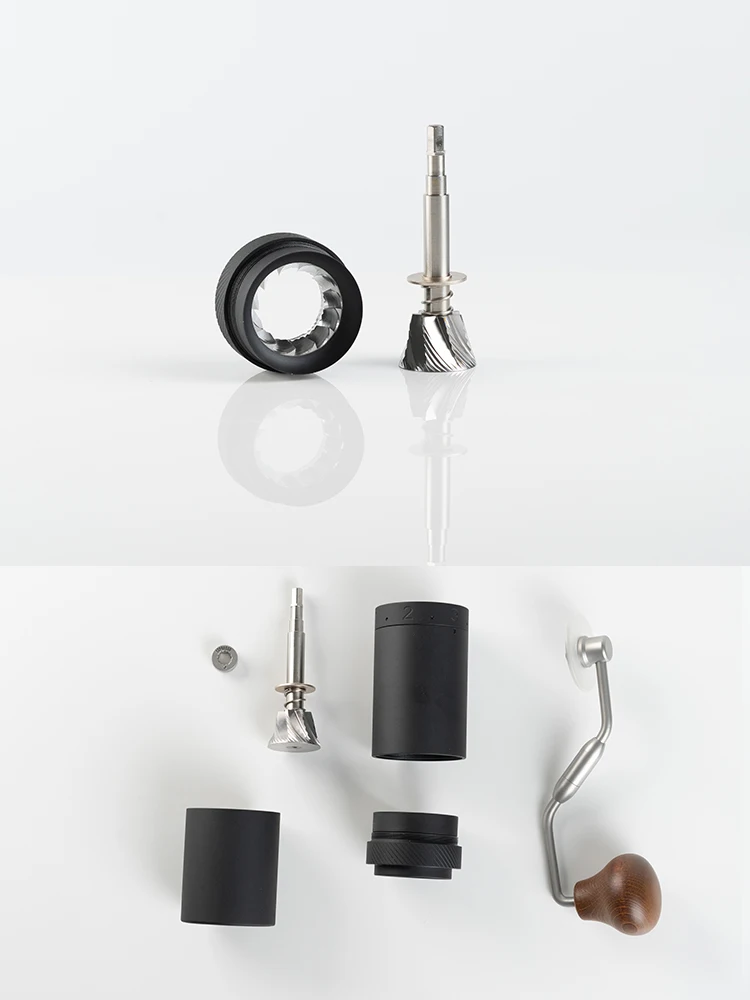
Practical Guide: Dialing In Your Grind Step by Step
Achieving the perfect espresso grind requires a methodical approach. Follow this step-by-step process to dial in your grind effectively:
Start with a baseline recipe
– Begin with a standard ratio: 18g coffee in, 36g espresso out (1:2 ratio)
– Target a 25-30 second extraction time from first drip
– Use this as your reference point for all adjustmentsMake your first shot and evaluate
– Prepare espresso using your initial grind setting
– Time the shot from when you start the machine
– Weigh the output to ensure you hit your target yield
– Taste and note the flavor profileAdjust one variable at a time
– If the shot runs too fast (under 20 seconds) and tastes sour: make your grind finer
– If the shot runs too slow (over 35 seconds) and tastes bitter: make your grind coarser
– Make small, incremental adjustments – typically just 1-2 marking points on your grinderPurge your grinder after each adjustment
– Always discard a small amount of coffee after changing settings
– This ensures you’re using the new grind setting, not leftover grounds from previous settingsRepeat the process
– Make another shot with the new setting
– Evaluate how the adjustment affected flow rate and taste
– Continue making incremental changes until you achieve optimal extractionDocument your settings
– When you find the perfect setting, record it
– Note the coffee type, roast date, grind setting, and taste profile
– This creates a reference point for future sessions
The key to successful dialing in is patience and systematic changes. Always change just one variable at a time so you can clearly observe cause and effect. Precise methodology for dialing in significantly improves your results.
Having a grinder with fine adjustment capability makes this process much more manageable. Quality grinders allow for tiny incremental changes rather than dramatic jumps between settings.
Remember that dialing in isn’t a one-time process but something you’ll do with each new coffee and as beans age. Fresh beans typically require a slightly coarser grind than beans that are 1-2 weeks old.
Troubleshooting Common Extraction Problems
Even experienced baristas encounter extraction issues. Here’s how to diagnose and solve common grind-related problems:
Problem: Shot pulls too fast (under 20 seconds)
– Symptoms: Thin, watery texture; sour taste; pale, minimal crema
– Cause: Grind is too coarse, creating insufficient resistance to water flow
– Solution: Make grind finer in small increments until flow slows to 25-30 seconds
Problem: Shot pulls too slow (over 35 seconds)
– Symptoms: Dripping rather than flowing; bitter, harsh taste; dark, spotty crema
– Cause: Grind is too fine, creating excessive resistance to water flow
– Solution: Make grind coarser in small increments until flow increases to target range
Problem: Channeling (water finding paths of least resistance)
– Symptoms: Spurting or uneven flow; combination of bitter and sour flavors
– Cause: Inconsistent grind size and/or poor distribution in the portafilter
– Solution: Ensure grind consistency; improve distribution technique; consider a better quality grinder
Problem: Inconsistent shots despite consistent settings
– Symptoms: Extraction time and quality vary significantly between shots
– Cause: Grinder producing inconsistent particle sizes or poor distribution technique
– Solution: Check grinder burrs for alignment and wear; improve puck preparation technique
Problem: No crema despite proper extraction time
– Symptoms: Good flow rate but minimal crema production
– Cause: Coffee beans too old or grind not fine enough despite adequate flow
– Solution: Use fresher beans (within 2-4 weeks of roast date); adjust grind finer while maintaining flow rate through dose adjustment
Different grinder types require different approaches to solving these problems. Quality manual grinders designed for espresso often provide more consistent results for troubleshooting extraction issues.
Remember that diagnosis requires isolating variables. When multiple problems appear simultaneously, address the grind issue first, then move to other variables like dose, distribution, and tamping pressure.

The Impact of Bean Variables on Grind Requirements
Different coffee beans require different grind settings, even when using the same brewing equipment. Understanding how bean characteristics affect grinding helps you adapt your approach for consistent results.
Roast Level
Darker roasts generally require coarser grinds than lighter roasts. This is because dark roasting makes beans more brittle and soluble, meaning they extract more readily. Using the same grind for dark roasts as light roasts typically results in over-extraction and bitterness. Most baristas find they need to adjust coarser by several setting points when switching from light to dark roasts.
Bean Density
Coffee grown at higher altitudes tends to be denser with harder cell structures. These dense beans often require finer grinding to achieve proper extraction compared to lower-grown, less dense beans. For example, high-altitude Ethiopian beans typically need a finer grind than Brazilian beans grown at lower elevations.
Bean Age and Freshness
Fresh beans (within 3-10 days after roasting) contain significant carbon dioxide that creates resistance during extraction. As beans age, they release this gas and become more extractable. This means you’ll typically need to:
– Use a slightly coarser grind for very fresh beans
– Gradually adjust finer as beans age beyond 10-14 days
– Make more significant adjustments once beans pass 3-4 weeks post-roast
Seasonal and Environmental Factors
Humidity significantly impacts grinding. In humid environments, coffee absorbs moisture and requires different grind settings than in dry conditions. Many baristas notice they need to adjust grinder settings with weather changes, particularly in regions with dramatic seasonal humidity shifts.
Understanding how different beans affect grind requirements helps explain why a “set it and forget it” approach rarely works for espresso. The perfect grind setting is a moving target that requires ongoing small adjustments as beans age and environmental conditions change.
The Right Tools: Choosing a Grinder for Espresso
Selecting the right grinder is perhaps the most important equipment decision for espresso preparation. Even the most expensive espresso machine can’t compensate for an inadequate grinder.
Essential Features for Espresso Grinders
The most critical features to consider include:
Burr Quality and Material: Premium burrs made from hardened steel or ceramic provide superior grind consistency. High-quality stainless steel manual grinders offer excellent durability and precision at a lower price point than many electric options.
Adjustment Mechanism: Stepless adjustment or very small stepped increments allow for the precise control that espresso requires. The finest adjustment possible is ideal, as espresso often needs changes too small for standard stepped grinders.
Burr Design: Flat burr grinders generally produce more consistent particle size distribution than conical burrs, though high-quality examples of both styles can produce excellent espresso.
Stability and Alignment: Properly aligned burrs that remain stable during grinding are essential for consistent particle size. Many premium manual grinders provide excellent stability at lower prices than their electric counterparts.
When balancing budget with performance needs, consider that grinder quality affects your results more directly than almost any other factor. Many professionals recommend allocating a substantial portion of your total espresso budget to your grinder – often suggesting the grinder should cost at least as much as your espresso machine.
Fine Adjustment Hand Grinder, Precision Manual Grinder, Travel Coffee Grinder
Price range: $185.11 through $494.63 Select options This product has multiple variants. The options may be chosen on the product pageHand Burr Grinder, Hand Crank Coffee Grinder, Manual Espresso Grinder, Portable Coffee Grinder
Price range: $262.72 through $300.22 Select options This product has multiple variants. The options may be chosen on the product pageManual Burr Mill, Manual Coffee Grinder Stainless Steel, Manual Coffee Mill Grinder, Mechanical Coffee Grinder
Price range: $127.26 through $130.32 Select options This product has multiple variants. The options may be chosen on the product pageHand Burr Grinder, Manual Coffee Grinder Stainless Steel, Precision Manual Grinder
Price range: $183.64 through $187.52 Select options This product has multiple variants. The options may be chosen on the product page
The long-term value of a quality grinder makes it a worthwhile investment. While entry-level models may need replacement after a few years, premium grinders often last decades with proper maintenance, making their higher initial cost more economical over time.
Fine-tuning your grind size becomes much easier with proper equipment. The right grinder transforms frustrating inconsistency into predictable results that can be methodically improved.
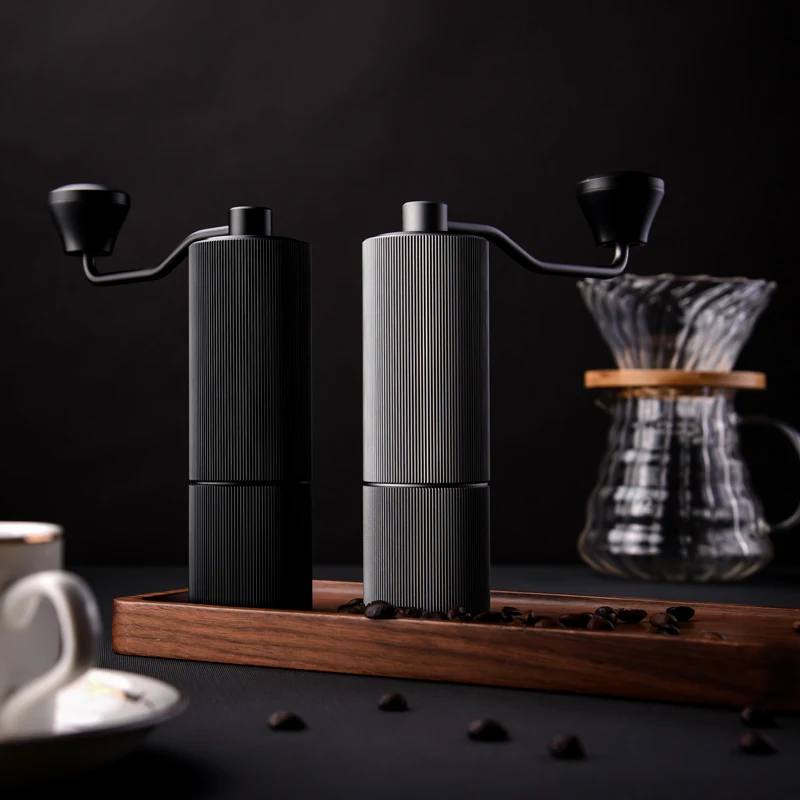
Grinder Maintenance and Its Effect on Consistency
Regular grinder maintenance directly impacts the consistency of your espresso extraction. Even the best grinder will produce inconsistent results without proper care.
Essential Maintenance Schedule
For optimal performance, follow this basic maintenance routine:
- Daily: Brush out retained grounds from the burrs and grind path
- Weekly: More thorough cleaning of grounds from all accessible areas
- Monthly: Deep cleaning including disassembly of burr chamber (if user-serviceable)
- Every 3-6 months: Check burr alignment and adjust if necessary
- Based on usage: Replace burrs after grinding approximately 500-1500 pounds of coffee (varies by grinder model and burr material)
Signs Your Grinder Needs Attention
Watch for these warning signals that indicate maintenance is needed:
- Sudden changes in flow rate despite using the same settings
- Increased noise or resistance during grinding
- Visible unevenness in ground particles
- Higher than normal operating temperature
- Unusual vibration or movement during operation
Burr Seasoning
New burrs often perform differently than seasoned ones. Most burrs reach optimal performance after grinding 5-10 pounds of coffee as their microscopic edges become properly conditioned. Many professionals “season” new burrs by running inexpensive coffee through them before using for actual brewing.
The ongoing process of maintaining your manual grinder is as important as choosing the right grinder initially. Clean burrs produce more consistent particle sizes, which directly translates to more consistent extraction and flavor in your cup.
Regular maintenance prevents the accumulation of coffee oils that can become rancid and taint future grinds. It also extends your grinder’s lifespan significantly, protecting your investment while ensuring optimal performance.
Advanced Techniques: Beyond Basic Grind Adjustment
Once you’ve mastered the fundamentals of grind size and consistency, you can explore more advanced techniques that complement your grinding approach.
Pre-infusion and Grind Relationship
Pre-infusion – the process of wetting the coffee grounds at low pressure before full extraction – can dramatically affect how your grind performs:
- With pre-infusion, you can often use a slightly coarser grind while maintaining proper extraction
- This combination reduces channeling risk and can extract more even, sweet flavors
- Without pre-infusion capability, you may need to grind slightly finer to extend contact time
Pressure Profiling Considerations
Modern machines with pressure profiling capabilities allow for customized pressure throughout the extraction:
- Declining pressure profiles typically work better with finer grinds
- Rising pressure profiles often pair well with slightly coarser grinds
- Flat pressure profiles (standard 9 bars throughout) represent the middle ground
Temperature and Grind Interplay
Brew temperature significantly affects extraction efficiency and can be adjusted in relation to grind:
- Higher brew temperatures (199-203°F) extract more efficiently, allowing slightly coarser grinds
- Lower brew temperatures (195-198°F) extract less efficiently, often requiring finer grinds
- Lighter roasts typically benefit from higher temperatures paired with finer grinds
- Darker roasts often work better with lower temperatures and coarser grinds
Advanced Distribution Techniques
Beyond basic tamping, specialized distribution techniques can improve extraction from any grind:
- WDT (Weiss Distribution Technique) uses a fine tool to stir and break up clumps in the grounds
- Tap-and-level methods ensure even density throughout the puck
- Distribution tools create a perfectly level bed before tamping
These advanced techniques for optimal extraction allow you to extract the best possible flavors from your coffee. Remember that as you implement these approaches, each change may require corresponding adjustments to your grind setting.
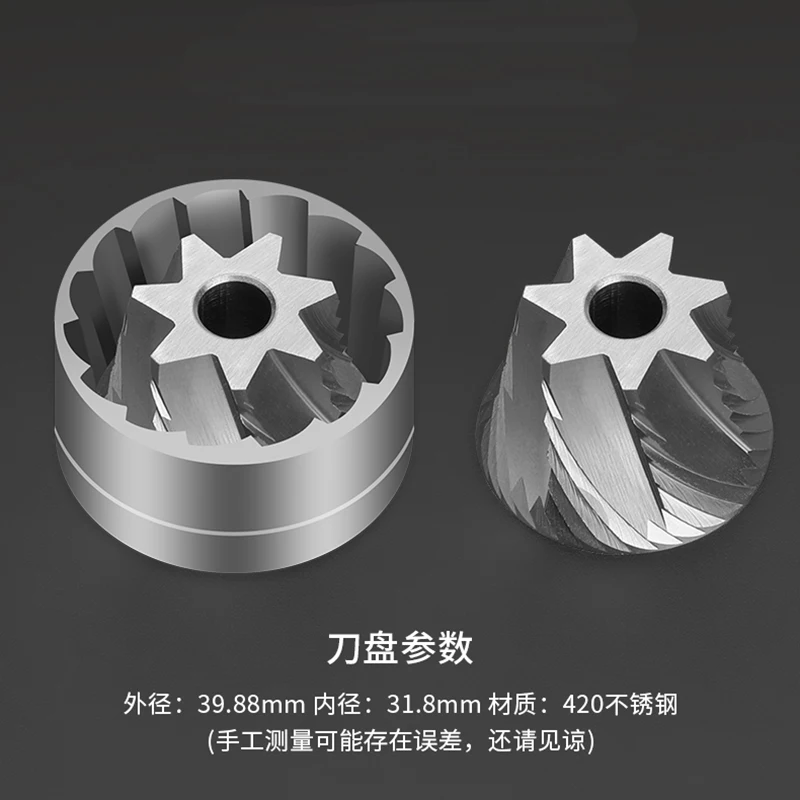
Is Your Grind Really to Blame? When to Look at Other Variables
While grind size is often the primary adjustment for espresso extraction, sometimes other variables are the actual source of problems. Before making dramatic grind changes, consider these other factors:
Common Non-Grind Issues That Affect Extraction
Uneven Distribution: If grounds aren’t evenly distributed in the portafilter, water will find paths of least resistance regardless of grind size. Signs include:
– Channeling despite appropriate grind
– Uneven extraction visible when using bottomless portafilters
– “Donut extraction” (center dry, edges wet)Inconsistent Tamping: Variations in tamping pressure or angle can cause extraction problems that mimic grind issues:
– Tilted tamps create faster flow on one side
– Too light tamping may require finer grinding to compensate
– Too heavy tamping can compress pucks excessively, causing channelingWater Quality Issues: Mineral content in water affects extraction and can mimic grind problems:
– Hard water can lead to flat-tasting shots that seem under-extracted
– Soft water may produce overly acidic shots that seem to need finer grinding
– Inconsistent water temperature creates variable extraction ratesMachine Pressure Inconsistency: Fluctuating pump pressure or failing gaskets can create symptoms similar to grind problems:
– Periodic fast/slow shots despite consistent grinding
– Gradual decline in flow rate across multiple shots
– Unexpected pressure drops during extraction
Use this checklist to rule out non-grind issues:
– Is your distribution technique consistent?
– Are you tamping with consistent pressure and level?
– Has your water source or quality changed recently?
– Is your machine clean and functioning properly?
– Is your dose consistent (measured by weight)?
Only after eliminating these variables should you make significant changes to your grind setting. Often, minor adjustments to technique solve problems more effectively than dramatic grind changes.
The Journey to Espresso Mastery: Patience and Experimentation
Becoming proficient at espresso preparation is a journey that requires patience, deliberate practice, and methodical experimentation. Even professional baristas continue refining their skills after years behind the machine.
Approach your espresso journey with realistic expectations. Most professionals agree that developing basic competence takes several weeks of daily practice, while true mastery might require months or years of dedicated focus. This timeline isn’t meant to discourage but to set realistic expectations—each small improvement leads to noticeably better results.
Methodical experimentation accelerates learning. Keep a simple log recording your grind setting, dose, yield, extraction time, and tasting notes. This data helps you identify patterns and make informed adjustments rather than random changes. Many professional baristas maintain detailed journals throughout their careers.
Building sensory skills takes time but dramatically improves your ability to evaluate results. Practice describing flavors specifically rather than generally. Instead of “sour” or “bitter,” try identifying specific qualities like “lemon-like acidity” or “charred wood bitterness.” This vocabulary development helps pinpoint exactly what needs adjustment.
Remember that personal preference plays a significant role in espresso. The technically “perfect” extraction might not match your taste preferences. Some enjoy brighter, more acidic shots, while others prefer deeper, more chocolatey profiles. Your goal is finding the optimal extraction for your palate, not meeting someone else’s standard.
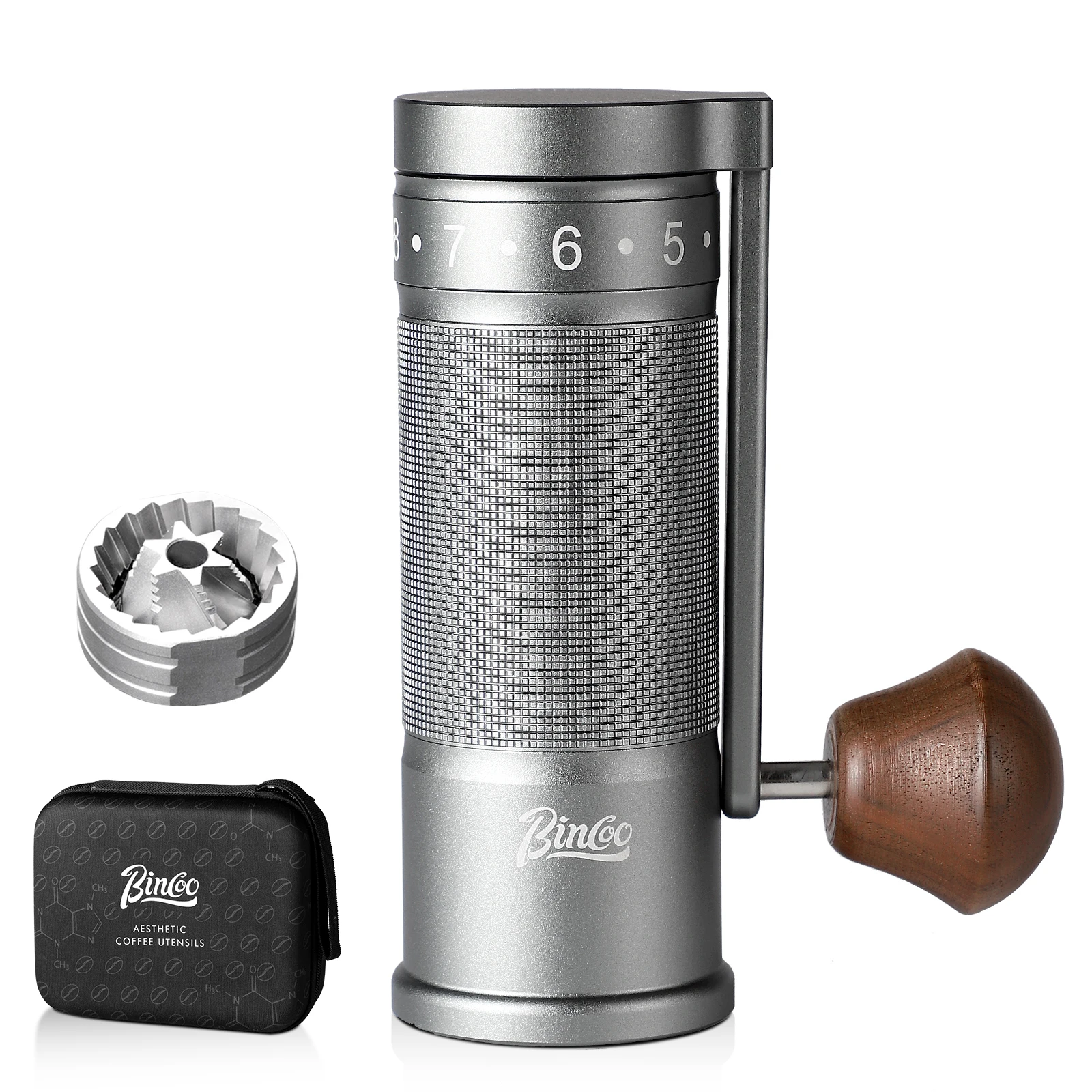
Common Questions About Espresso Grind and Extraction
Can I use pre-ground coffee for espresso?
While possible in emergencies, pre-ground coffee is rarely suitable for quality espresso. Most commercial pre-ground coffee is too coarse for proper espresso extraction. Additionally, coffee begins losing volatile compounds within minutes of grinding, meaning pre-ground coffee lacks the aromatic complexity of freshly ground beans. Finally, pre-ground coffee eliminates your ability to adjust grind size—your most important extraction variable.
How often should I adjust my grind throughout the day?
Professional baristas often make minor grind adjustments several times daily, especially in commercial settings with variable environmental conditions. Home baristas might adjust less frequently, but should consider small changes when:
– Ambient humidity changes significantly
– Room temperature fluctuates markedly
– The machine has been running for extended periods (heating up)
– Extraction times drift beyond the target range
Should I adjust grind or dose first when troubleshooting?
Grind should almost always be your first adjustment. Dose changes should be secondary, used primarily to fine-tune extraction after finding the appropriate grind range. Changing both simultaneously makes it impossible to determine which variable caused any improvement or deterioration in results.
How much does grinder calibration matter?
Proper calibration is essential for consistent results. Even expensive grinders can perform poorly if poorly calibrated. Signs your grinder needs calibration include:
– Inability to achieve fine enough grind for proper extraction
– Dramatic changes in extraction time with minimal adjustment
– Excessive variation in particle size
– Burrs touching at settings far from the finest setting
Regular calibration checks ensure your grinder performs optimally throughout its lifespan.
The Relationship Between Grind and Different Espresso Machine Types
Different espresso machine designs require specific approaches to grinding. Understanding how your particular machine works helps you adapt your grinding strategy appropriately.
Lever Machines
Manual lever machines typically operate at lower and variable pressure compared to pump machines. This generally requires:
– Slightly finer grinding to create necessary flow resistance
– More attention to consistent tamping since pressure varies throughout extraction
– Gradual pressure ramping that works well with medium-fine grind profiles
Semi-Automatic Machines
The most common home machines operate at consistent pump pressure (typically 9 bars). They work best with:
– Medium-fine to fine grind, depending on the specific model
– Consistent grind size since pressure doesn’t vary to compensate for inconsistencies
– More precise grinding since most lack pressure profiling capabilities
Super-Automatic Machines
These all-in-one machines typically require:
– Slightly coarser grinds than semi-automatics to prevent clogging internal pathways
– Less oily beans to prevent grinder blockages
– Medium roast beans that work better with their built-in grinding mechanisms
Home vs. Commercial Machines
Commercial machines often have more powerful pumps and larger group heads, affecting grinding requirements:
– Home machines may need slightly finer grinding to create adequate resistance
– Commercial machines with pre-infusion capabilities often work better with slightly coarser grinding
– Single-boiler home machines may require temperature surfing techniques paired with appropriate grind adjustments
The boiler system also impacts grinding approach:
– Single boilers often have more temperature fluctuation, requiring more grind consistency
– Double boilers provide more stable brewing temperatures, allowing more precise grind adjustment
– Heat exchanger systems may need specific grinding approaches based on their flush routines
Understanding these machine-specific considerations helps you adapt your grinding approach appropriately rather than trying to apply universal settings across different equipment types.
When Finer Isn’t Better: The Limits of Grinding for Extraction
A common misconception among espresso beginners is that finer grinding always improves extraction. While finer grinding does increase extraction potential, there’s a point where this approach becomes counterproductive.
Grinding too fine creates several problems:
– Excessive fines (dust-like particles) that over-extract instantly
– Blocked water pathways that prevent proper flow
– Increased channeling risk as water seeks paths around overly compacted areas
– Extraction of undesirable bitter compounds that would normally remain in the grounds
This creates a situation where the overall shot may be under-extracted (water couldn’t properly penetrate all grounds) while simultaneously containing over-extracted flavors from the excessive fines. The result is an unpleasant combination of sourness and bitterness rather than balanced sweetness.
Signs you’ve gone too fine include:
– Shots that start very slowly then suddenly rush (channeling)
– Uneven extraction visible in bottomless portafilters
– “Dead spots” in the puck where water didn’t penetrate
– Simultaneous sour and bitter flavors in the cup
The optimal approach focuses on finding the sweet spot where water flows at the appropriate rate while extracting balanced flavors. Sometimes this means accepting a slightly coarser grind that allows even flow rather than chasing ever-finer settings.
High-quality grinders help avoid these issues by producing more consistent particle sizes with fewer fines. This allows you to grind fine enough for proper extraction without creating the problems associated with excessive fines.


